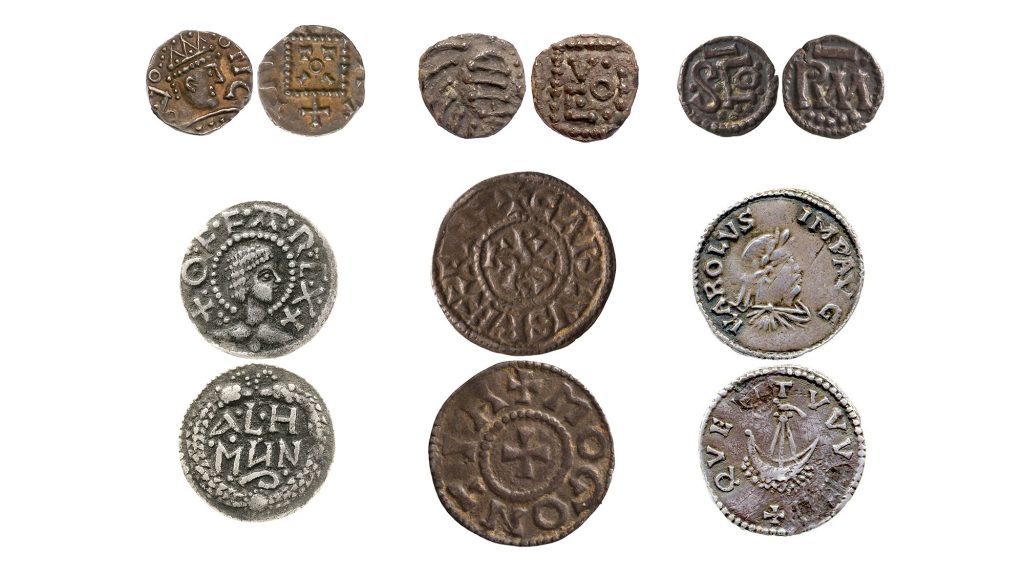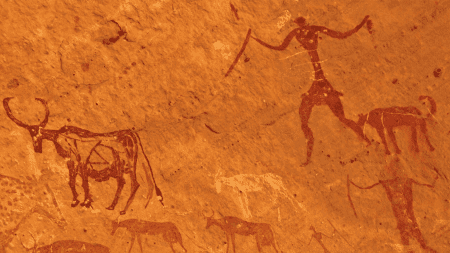Currency created by humans such as coins and paper money have definitely changed over time. Small pieces of valuable metals or paper without metal backing have become digital currencies that are not visible and are stored on servers. For many years, people who study currency–or currency experts–have been curious about where the silver inside some coins found in England came from. The coins were made between 660 and 750 CE, when the Anglo-Saxon world started to use silver coins for trade in a big way. This shift moved away from relying on gold, and archaeologists have found about 7,000 of these silver pieces.
Now, a new non-intrusive way of looking into the past may have shown where the silver used in the coins came from. It provides clues about how changes in politics and the rule of Charlemagne–the Holy Roman Emperor and King of the Franks–affected currency changes in early medieval Europe. The findings are explained in a new research paper published on April 8 in the journal Antiquity and could enhance our modern understanding of the continent’s economic and political development at that time.
Benjamin Franklin used science to safeguard his money from counterfeiters.]
“There has been talk that the silver might have come from Melle in France, or from an unknown mine, or that it might have been made from church silver,” Rory Naismith, a historian of early medieval English from the University of Cambridge and one of the study's authors, stated in a release. “But there was no solid evidence to confirm any of these ideas, so we tried to find it.”
A bit of assistance from lasers
In previous studies, other coins from a silver mine at Melle were examined, but this observed less-studied Fitzwilliam’s coins. These 49 pieces of silver were produced in England, the Netherlands, Belgium, and northern France and go back to the period between 660 and 820 CE. They are kept by new study The Fitzwilliam Museum in Cambridge. Jason Day from the Department of Earth Sciences at Cambridge analyzed what elements were present in the coins in a lab. Day then used a
method called portable laser ablation . During this process, tiny samples were gathered onto Teflon filters to analyze the lead isotopes. This new technique, developed by the Vrije Universiteit in Amsterdam, combines aslightly intrusive sampling with a laser and the highly precise results from the more traditional methods that take samples of metals. Although the coins were mainly made of silver, the levels of gold, another
substance called bismuth , and other elements helped the researchers discover the previously unknown origins of the silver. The different ratios of lead isotopes in the silver coins also gave additional clues as to where the metals came from.Byzantine silver for everyone
Twenty-nine of the coins in the study were made between 660 and 750 CE. They were produced in today's England, France, and a cross-border cultural area in Northwestern Europe called
However, the lasers showed very distinct chemical and isotopic features that matched 3rd to early Frisia. 7th century silver coming from the Byzantine Empire in the eastern Mediterranean. This Byzantine silver was uniform across the coins. No known European ore matches the elemental and isotopic characteristics of this early silver according to the team. Also, there is no significant overlap with late
Ancient Roman silver coins from the western part of the empire or other items made from this metal, indicating that it was not just reused late Roman silver. “These coins are some of the first signs of a recovery in the northern European economy after the fall of the Roman Empire,” said Jane Kershaw, an archaeologist at the University of Oxford and co-author of the study.
stated in a press release . “They demonstrate extensive international trade connections between what we now know as France, the Netherlands, and England.”The research suggests that the Byzantine silver must have entered Western Europe before being melted down, as the late 7th century is considered part of the Dark Ages, or more accurately termed
Migration Period . This was a low point in trade and diplomatic relations as the Roman Empire came to an end.A team of divers discovered a hoard of over 30,000 ancient bronze coins off the coast of Italy
“These magnificent luxury items would only have been melted down if a king or lord urgently needed a large amount of money. Something significant must have been happening, a major social change,” Kershaw explained. “The elites were converting resources into cash and injecting more and more money into circulation. This would have had a significant impact on people’s lives, leading to increased focus on money and greater involvement with money across a much larger portion of society than before.”.]
The team aims to
investigate further how and why so much silver traveled from the Byzantine Empire to Western Europe. It may have been a combination of trade and payments to Anglo-Saxon mercenaries who served in the Byzantine army. The increase in Frankish silver also indicated a shift from Byzantine silver to a new source of metal. An analysis of 20 coins from 750 to 820 CE revealed that the silver was notably different by this time, with lower levels of gold, a characteristic of the silver mined at Melle in western France.
Mined here was
The study particularly intense during the 8th and 9th centuries. The team believes that Melle silver spread throughout regional silver reserves after 750 CE and was mixed with older, higher-gold reserves, including Byzantine silver. While it was already known that Melle was a significant mine at this time, what was unclear was how rapidly the site became a major silver producer. The study argues that this widespread surge in Melle silver was driven by Charlemagne. He isknown for forcing the unification of Western Europe and exerting more control over the minting of coins in his kingdoms. Managing the silver supply likely accompanied the other changes introduced by Charlemagne, his son, and grandson. These changes in currency including altering the size and thickness of coins and inscribing their name or image on the coins.
“I strongly suspect that Charlemagne did something similar with Melle silver,” Naismith said. “We can now provide more information about the circumstances under which those coins were made and how the silver was being distributed within Charlemagne’s Empire and beyond.”
Charlemagne likely had significant influence over silver coins in the mid-7th century. best known for uniting Western Europe by force and he took more control over how and where the coins of his kingdoms were made. The management of silver supply likely went alongside the other changes introduced by Charlemagne, his son, and grandson. These monetary changes include altering the size and thickness of coins and marking their name or image on the coins.
“I strongly suspect that Charlemagne did something similar with Melle silver,” Naismith said. “We can now say more about the circumstances under which those coins were made and how the silver was being distributed within Charlemagne’s Empire and beyond.”









